Addressing systems of social, economic and environmental oppression is intrinsic to Heifer International’s work. As an organization, we strive to end hunger and poverty while caring for the Earth. But we must remember that poverty is not an accident. When specific groups of people experience similar forms of socioeconomic marginalization, that is by design.
In this series, we are exploring the intersection of historical racism and agricultural development, examining the impact on Black, Indigenous and people of color to contextualize how hundreds of years horrors continue to shape and influence the lives of the families with whom we work.
Cardamom is known as “the queen of spices,” and it comes with a price tag to match the name — it’s the world’s third most expensive spice, after saffron and vanilla. But while companies, traders and intermediaries extract profit from cardamom, producers struggle to get by. In the case of cardamom, most of the world’s production comes from Indigenous Guatemalan farmers who historically have been marginalized, robbed of land, excluded from national and international economies, and targeted by acts of unconscionable violence, all of which erode their present-day ability to maintain a dignified standard of living.
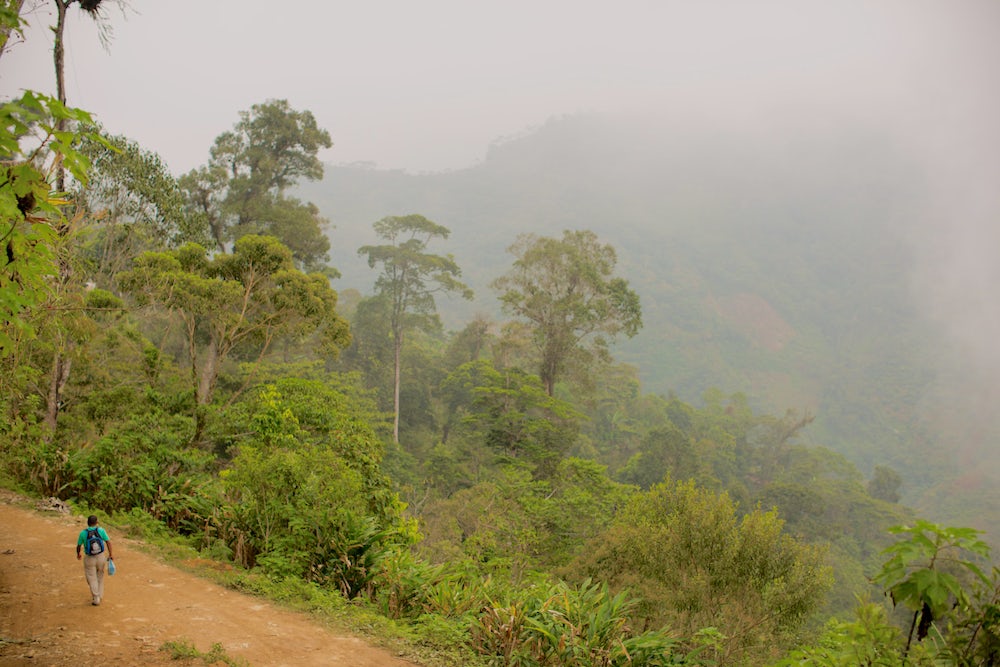
Today, about two-thirds of all cardamom on the International market comes from the cloud forests of Guatemala, primarily in the department of Alta Verapaz, but the aromatic spice originates in the Western Ghats mountain range in India’s state of Kerala. According to Sanskrit texts, farmers in what is now Kerala were cultivating the Indian culinary staple as far back as 3000 B.C. The spice extended its reach via the Silk Road and other trade routes, becoming a valued commodity in ancient Greece, Rome and Egypt as well as Babylon, Assyria and China. Cardamom is a stalwart in modern cuisines from Southeast Asia to the Middle East to Scandinavia, and it’s used popularly in curries, chewing gum and gin.
Despite its global popularity, much of the world’s supply of the commodity came from wild Kerala cardamom until the 1800s, when the British established plantations in parts of the country, including the Western Ghats, where they already had coffee plantations. In 1914, a German plantation owner named Oscar Majus Kloeffer set out to undercut India’s near monopoly by planting green cardamom from Kerala at his coffee estate in Cobán, Guatemala. The mountains of Alta Verapaz turned out to be an exceptionally productive home for the plant. Guatemala was a leading exporter of the crop by the 1970s; since 2000, the country has been the world’s leading producer of cardamom.
Nearly 70% of Guatemala’s cardamom comes from 300,000 farmers in Alta Verapaz using less than 10 acres of land each. On those small swaths of land, the majority of farmers are Q’eqchi’, an Indigenous Maya group, and virtually all of them are living in poverty. This did not happen through coincidence.
COLONIAL SEEDS OF OPPRESSION
The oppression of the Indigenous peoples in what is now Alta Verapaz began after the arrival of Spanish colonizers in the 16th century. By 1524, Spain had subjugated native populations to establish the colony of Guatemala, but Maya groups in Alta and Baja Verapaz resisted more successfully by leveraging heavily forested or mountainous terrain to their advantage.
After a protracted military failure to steal more land and control an unwilling populace, the Spanish turned to religion. In the 1530s, a Dominican friar named Bartolomé de Las Casas proposed using conversion to Catholicism instead of violence to secure the area for both Spain and God. On this front, the Spanish succeeded, naming the region Verapaz, or “true peace.” The region did not live up to its name, as colonists invaded Verapaz for slaves and lands shortly after.
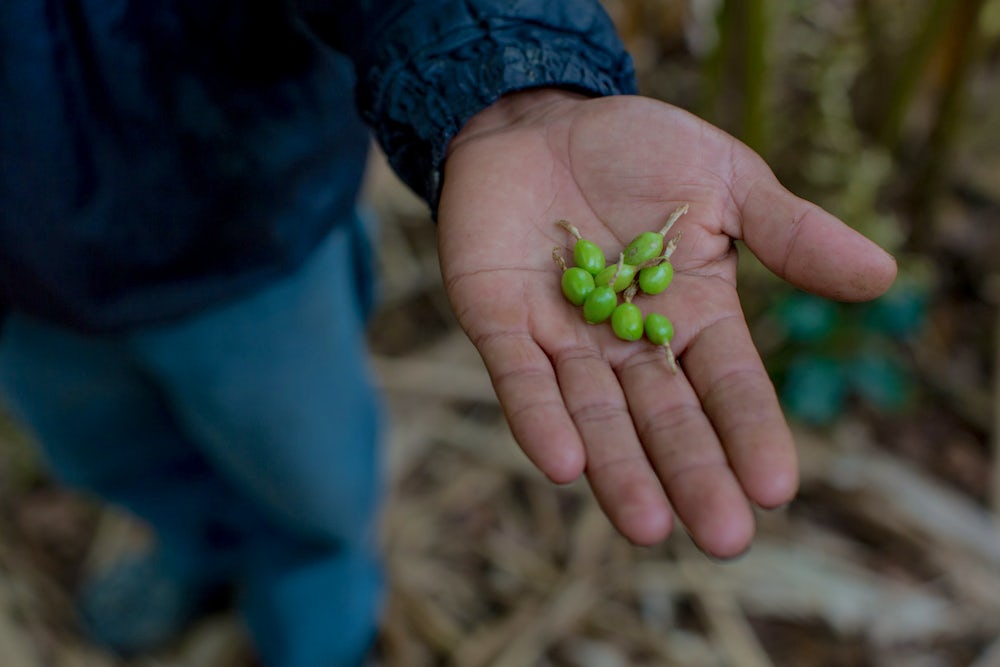
In the late 17th century, several Indigenous groups were forcibly relocated to Alta Verapaz from other parts of Guatemala and Belize, where they joined the Qʼeqchiʼ population. Spain continued to exploit forced labor and land until 1821, when authorities withdrew, and Guatemala declared independence. But even after independence, some areas of Guatemala like Alta Verapaz entered into a second era of colonization.
“Alta Verapaz was affected by a different model after independence, and this was opening the door to foreign immigration,” said Gustavo Hernandez, Heifer Guatemala’s country director. “A serious problem was that the government did not recognize the land rights of the Indigenous population. The government considered their lands public lands and granted them to immigrants.”
Under the authority of President Justo Rufino Barrios, Europeans — mostly Germans — were invited to take communal Maya lands to turn into coffee and sugar cane plantations. The people living on the land were considered part of the economic transaction and used for labor in the fields. Those who fought against the loss of their land and freedom were killed or run off. Indentured Maya workers earned a paltry wage in an illegitimate currency that could only be used to buy food and clothing from stores on the plantations.
“Mozo colono is the term given to those original families of the territories that were included as part of the farm,” said Hernandez. “It’s a grave violation of human rights.”
It’s this system, known as the finca system, that Oscar Majus Kloeffer took advantage of as he experimented with growing cardamom from Kerala on his coffee plantation in Cobán. Although the primary justification cited for the finca system was foreign investment, it was permeated with the idea that Indigenous cultures were inferior to the rest of the population.
“From the beginning there was a belief in the need to make the nation whiter in order to improve the race,” said Marta Elena Casaús Arzú, a Guatemalan-born professor of political science, sociology and history at the Autonomous University of Madrid and author of Guatemala: Lineage and Racism, in an interview for digital newspaper El Faro.
“It has become naturalized, because racism not only serves to justify exploitation, domination and oppression — it also serves to unify both the ruling class as well as the middle classes, who want to ‘whiten’ themselves in hopes of joining the ruling class,” Casaús Arzú said, adding later that to be Indigenous in Guatemala is itself an offense.
In the 1930s, the government enacted a set of “vagrancy laws” that forced poor, mostly Indigenous people to work on plantations 100 to 150 days a year, depending on how much land they cultivated. During that time, police officers arrested Maya people for petty offenses or a lack of formal work, and they could only work off the fines by picking coffee on a plantation.
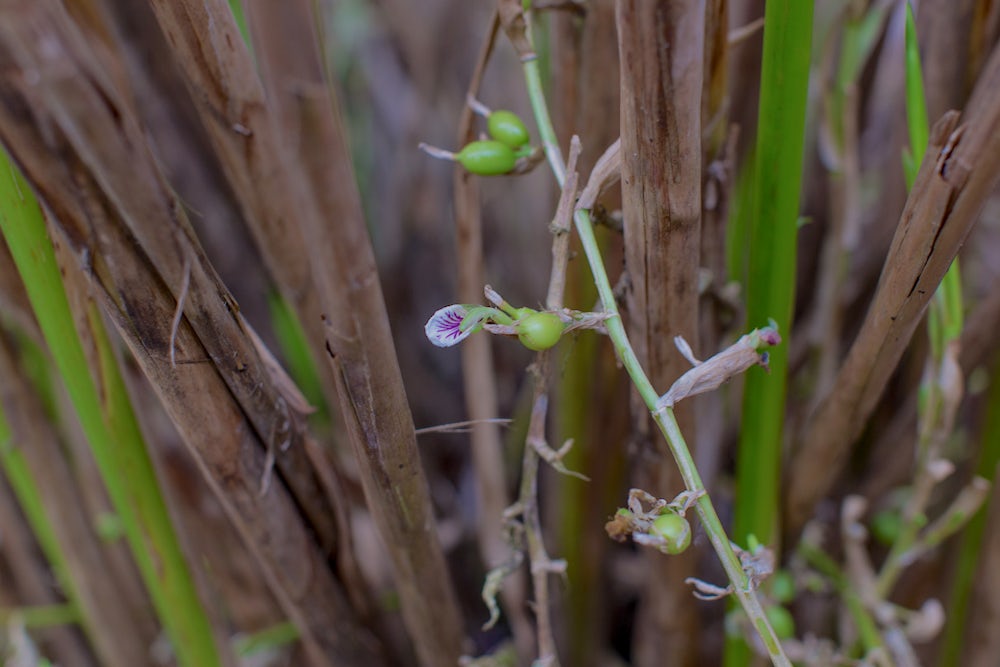
During World War II, thousands of Germans were deported from Guatemala and other Latin American countries at the behest of the United States government, and some never returned. But the vacated lands were not returned to native peoples.
After World War II, only 2% of the population of Guatemala controlled 72% of the country’s arable land, and only 12% of private land was cultivated. In the early 1950s, as an economic and social course correction, President Jacobo Arbenz passed Decree 900, an agrarian land reform law that would redistribute idle parcels of land greater than 223 acres to agricultural workers. The law could have paved a way for Maya groups to break free from centuries of imposed dependence on an elite class of landholders. However, fearing Arbenz might be too sympathetic to Communist organizations, the CIA orchestrated a coup in 1954, ending land reform efforts and jettisoning Guatemala into political instability.
THE SHADOW OF WAR
From there, the situation deteriorated precipitously for the native peoples of Guatemala. From 1960 to 1996, civil war consumed the country, leaving more than 200,000 people dead and 43,000 people forcibly disappeared. At least 80% of victims were Maya.
In 2018, Guatemalan judges unanimously ruled that the country’s military committed genocide against the Maya-Ixil people, one of 22 Mayan ethnolinguistic groups, in the northwest region. During the tribunal, according to a news report, survivors spoke about the massacres but also crimes of rape, theft of children, bombing, displacement and forced starvation.
But the Ixil people were by no means the only Indigenous group that bore the brunt of the brutality during the civil war era. The Q’eqchi’ community in Alta Verapaz suffered from murders, forced disappearances and other human rights abuses. Years after the war, at a military outpost near the department’s capital of Cobán, investigators uncovered a mass grave of 550 bodies. After forensic examination, many bodies showed evidence of torture.
From the time of the coup through the decades of civil war, Q’eqchi’ people were continually forced off their lands. In an attempt to escape the violence, mirroring Spanish colonial times, many Maya-Q’eqchi’ fled higher into the mountains, where the difficult terrain and lack of roads made it more difficult to reach them. By the time the civil war subsided, the Indigenous population of Guatemala had not only suffered great loss of life and severe trauma, but many families were further marginalized through societal exclusion.
“One expression of racism and discrimination is that [they] haven’t had access to health or education in any consistent way, and they also haven’t had adequate access to infrastructure,” said Hernandez. “There are many faraway communities in the mountains where there’s no adequate access to roads. There’s not sufficient infrastructure, there’s no electricity. This is an expression of exclusion that we have to look at with public policies as driving forces.”
THE RIGHT TO LAND
The post-war years didn’t bring much solace to the Q’eqchi’. Palm oil plantations, hydroelectric projects, mining and other interests pushed Maya people off their productive farmlands once again. A study from Food First and the Institute for Food Development Policy estimates that 11 percent of Q’eqchi’ families lost their land to palm oil and sugar plantations between 2003 and 2012. The finca system eventually ended, but it lasted the longest in Alta Verapaz — through the 1990s. When it did end, families who had worked on the plantations were evicted and not given land on which to live and farm, leaving them scrambling to do so, often into the mountains.
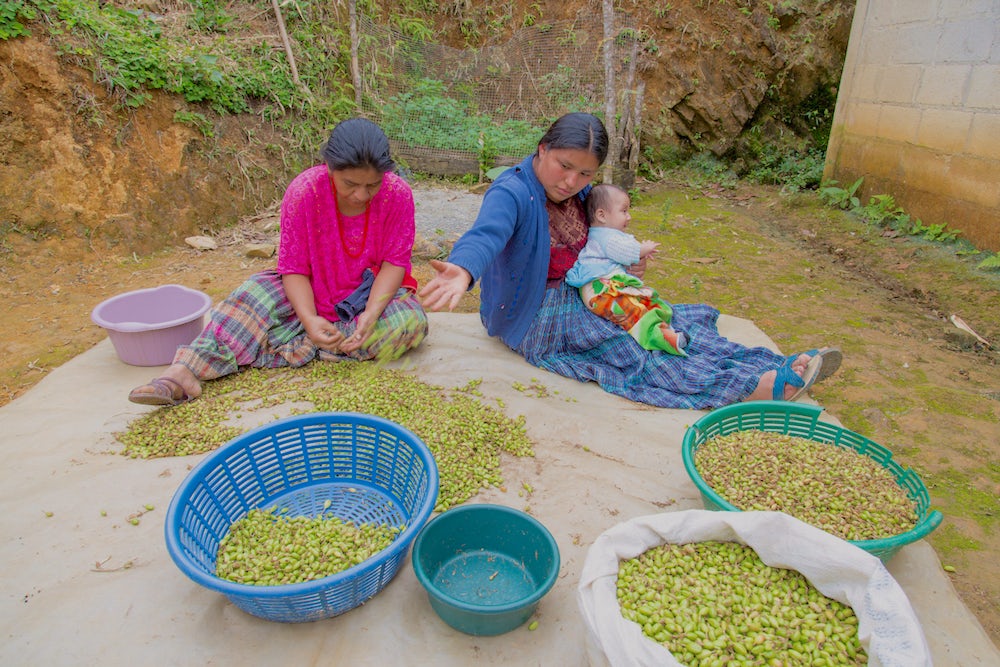
“Now, the majority of the families in [Alta Verapaz farming] communities are children and grandchildren of mozos colonos,” said Gerson Coy, who manages Heifer Guatemala’s cardamom projects.
In some cases, Indigenous land rights were recognized but not without challenges. Coy explained that Indigenous peoples in Guatemala often hold communal land rights, but the legal and financial systems in the country are designed for landowners with individual titles. One major consequence is that poor farmers are unable to use land as collateral for low-interest loans to build economic momentum or provide a safety net in times of emergency.
“If [a communal landholder] wants to go to the bank and ask for credit, everyone has to agree, and the credit is for everybody,” said Coy. “If one person wants to use the land as collateral for a loan, that’s not possible.”
Coy said a single 100-acre plot might have anywhere from 20 up to hundreds of owners. “If they want to have their own, individual piece of land with a title, they have to get permission from all of the owners,” he said. If any of the owners have passed away, a legal restructuring process must take place before the individual can receive the land title.
“That process can take three to 10 years for each deceased person,” Coy said. “This is difficult because sometimes there are communities with 60 property owners and 30 have died. And the cost is $1,200 per person. So this is a huge problem.”
MARGINALIZATION AND THE QUEEN OF SPICES
The Q’eqchi’ are among the poorest populations in Guatemala, and Alta Verapaz has the lowest development indicators in the country. Families still suffer from lack of food, health services and education, and it’s no easy task to escape from systems of discrimination and exclusion.
“I looked at some reports from the World Bank, which showed that Indigenous families —because they speak a different language, because they don’t have access to education and health services — it took them 24 years on average to get out of poverty, but for a Ladino [Spanish and Indigenous descent] family living in the same conditions of poverty, it only took 14 years,” said Marta Elena Casaús Arzú.
Some Q’eqchi’ families simply cannot survive in such an environment and leave their communities, making the dangerous migration to the United States. Those who do stay often depend on selling cardamom to make money.
Until the late 1990s, coffee served as the primary focus for farmers in Alta Verapaz. But low coffee prices drove farmers in Alta Verapaz to lean more heavily on growing cardamom. The higher elevation areas the Q’eqchi’ adopted during the civil war proved to be an ideal environment for the crop and production took off, positioning Guatemala as the world leader in cardamom production. But that didn’t result in higher incomes for producers.
“Cardamom is a way for many people to get out of poverty or get richer,” said Coy. “Except the producer.”
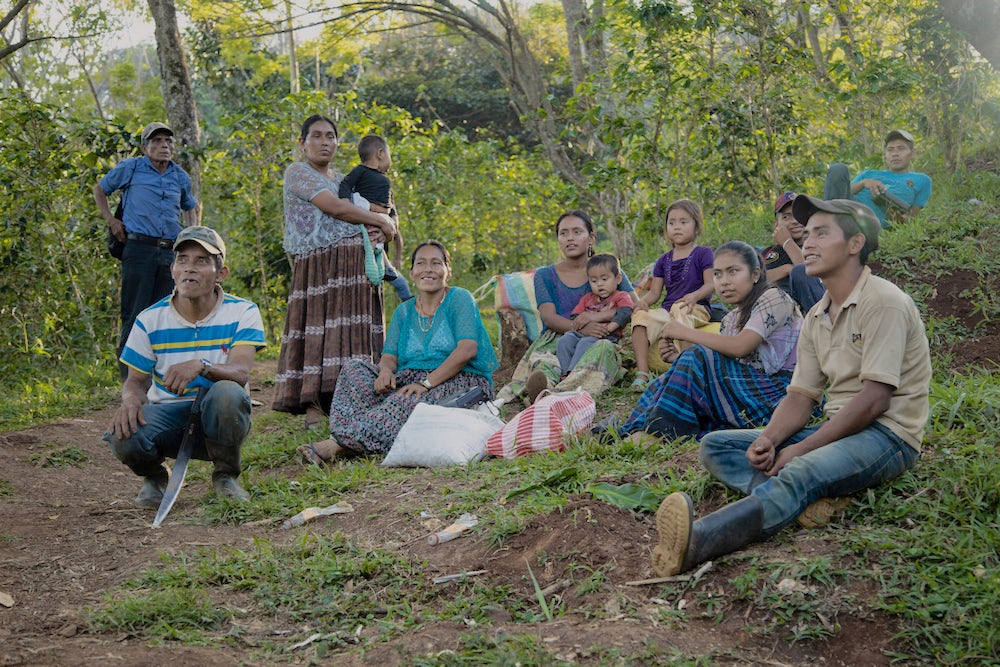
The path from cardamom fields to consumers is a circuitous one, with as many as 24 links in the supply chain, according to Coy. Globally, the commodity sells for about $10 per pound. By the time cardamom reaches stores in the United States, it sells for at least three times that in whole pod form. Yet, in an industry worth nearly $70 billion, the average income for a cardamom farmer in Alta Verapaz is only $185 to $265 a month. The Heifer Guatemala team says farmers need to earn around $400 to maintain a decent standard of living. Farmers receive by far the lowest profit margins, and much of the reason can be traced to the history of marginalization of the Q’eqchi’ people.
“There exists an exclusion of cardamom producers from the chain, from the buyers, the intermediaries and the producers,” Coy said. Often, cardamom-growing families speak only Q’eqchi’, while buyers speak Spanish, and since they are isolated both geographically and culturally, farmers are unaware of fair prices.
For these reasons, Q’eqchi’ who sell cardamom struggle in negotiations, and some intermediaries take advantage of that. And since cardamom harvests rot in as little as 12 hours if not processed properly, small-scale farmers feel pressure to take the prices that are offered, even if they seem exceedingly low. Additionally, Q’eqchi’ farmers do not have the access to reliable roads, transportation or heavy machinery that could be used to dry and sell cardamom for a higher price in the city. Traditionally, cardamom farmers work individually and don’t consider banding together to strengthen their collective bargaining power or increase production capacity and attract bigger buyers.
“An expression of racism and discrimination in our country is the high levels of repression of the government, particularly from the military side,” said Hernandez. “During the civil war, the levels of repression were so high that any social movement was a danger for the government. That’s why it’s easy to explain why these farmers, when they got the farm, why they didn’t organize or think about cooperatives. They don’t think in that way because of the levels of repression and low levels of education.”
Heifer Guatemala and Alta Verapaz cardamom farmers are working to change the dynamics of the cardamom industry. Ultimately, the goal is for farmers to have the tools, knowledge, access and infrastructure that allow them to participate more fully all along the supply chain and sell their product to buyers who pay higher prices. That starts with education and training in topics ranging from improving cardamom yields to business management and negotiating a fair price as well as the formation of cooperatives. The programs of Heifer Guatemala are also addressing some of the longstanding systemic disadvantages Indigenous people face.
“We’re creating a guarantee fund with Heifer Impact Capital so producers can access a line of credit and have the possibility to enter markets,” Hernandez said. The fund will serve as the collateral farmers need to access low-interest loans. The loans and cooperative membership mean farmers can add value to their product by drying large amounts of cardamom together, and then they can sell to bigger buyers directly. This not only ensures a living income and full market participation for cardamom farmers in Alta Verapaz but also moves toward undoing the seeds sown from hundreds of years of exclusion, marginalization and racism.
WHAT YOU CAN DO
Changing a system deeply entrenched in hundreds of years of oppression won’t happen overnight, but your actions can contribute to creating lasting change. Here are a few simple things you can do to start.